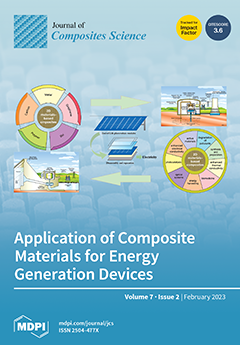In the current practice of applying carbide-based coatings by thermal spraying, the starting material usually contains a metal binder. However, it is important to study the possibility of spraying binder-free carbides, since the metal components usually reduce the operating temperature and corrosion resistance
[...] Read more.
In the current practice of applying carbide-based coatings by thermal spraying, the starting material usually contains a metal binder. However, it is important to study the possibility of spraying binder-free carbides, since the metal components usually reduce the operating temperature and corrosion resistance of cermet coatings. In this work, a powder of chromium carbide, Cr
3C
2, was sprayed using a CCDS2000 detonation gun. Acetylene–oxygen mixtures C
2H
2 +
kO
2 with
k varying from 0.8 to 3.0 were used as an energetic material. Due to chemical reactions between Cr
3C
2 and the detonation products, the coatings were of composite nature (multi-phase materials) with a composition depending on
k. At
k values in the range from 0.8 to 1.1, along with Cr
3C
2, the coatings contained chromium carbonitride Cr
3N
0.4C
1.6. In the
k range from 1.3 to 2.0, Cr
7C
3 and Cr were the main components of the coatings. As
k was increased to 3.0, along with Cr
7C
3 and Cr, the CrO and Cr
2O
3 oxides formed in the coatings. The mechanical properties and wear resistance of the coatings were found to depend on their phase compositions. Coatings produced by detonation spraying of Cr
3C
2 powder may be useful for increasing the corrosion resistance of machine parts to mineral acids and high-temperature oxidation resistance.
Full article





